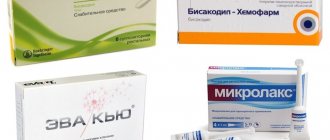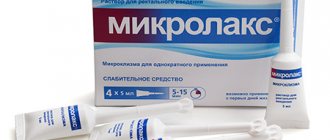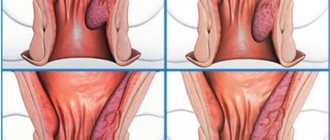More and more people are interested in information about the ways of transmission of AIDS. Many people have heard that infection occurs during sexual intercourse, but the level of awareness about another method of infection is low. Studies conducted in many countries have shown that HIV can be transmitted when biological fluids of carriers enter the body of healthy people. The virus enters most often through blood and semen.
Knowledge is the power that conquers fear
The methods of transmission of AIDS should be clearly known to everyone - from schoolchildren to the elderly. This will help protect the world from new infections, save yourself and your loved ones from a fatal disease, and increase society’s tolerance towards people who were unable to avoid infection. People’s ignorance of all the information and inattention to details makes them fear and hate those who are sick, considering them an indispensable source of infection. This makes patients outcasts at a time when they so desperately need support and understanding, including psychologically.
Household contacts and the possibility of infection through them are the most common and discussed topic of AIDS.
- Can the virus be transmitted through saliva during a kiss?
- If a sick person sneezes or coughs, will he infect those who get particles of mucus from his mouth and lungs?
- Is it true that an infant infected his mother during feeding because his saliva entered her body?
- If a mother is sick, can she infect her child, for example, by licking a spoon or simply blowing on hot porridge?
- A mentally ill person who was diagnosed with AIDS bit 30 people in the USA - did they all become infected?
There are so many questions that there are not enough volumes of encyclopedias and medical journals to answer them. How to convey information to everyone, convince them of true facts and refute false ones? To do this, we need to constantly and in an accessible form talk about the methods of transmission of AIDS and debunk the myths that surround this disease.
Risky sexual behavior with HIV
In the 20th century, at least 8 clinical studies were conducted to determine how high the likelihood of HIV transmission is through oral sex.
The official figures were shocking.
It turned out that about 7% of new cases of infection occurred precisely through this form of satisfying sexual passion.
And although the mathematically calculated risk of infection for one act alone is approximately 0.04%, it cannot be considered zero.
If only because this is an average over several thousand episodes.
Unfortunately, many people still mistakenly neglect such knowledge.
And they begin to think about the problem only when they learn about their positive status.
Of course, it is possible to help such patients, but it is much better to take into account the risk of infection and danger factors.
There are several of them:
- ejaculation in mouth
- concomitant sexually transmitted diseases (STIs)
- mucosal injuries, ulcers and wounds in the mouth
- weak immune status of the passive partner
- high viral load in the active partner
This applies to this type of contact when oral sex (blowjob or cunnilingus) is provided to an HIV-infected person (man or woman).
In the opposite case, when services are provided by an infected person, there are slightly fewer risk factors:
- bleeding ulcers and wounds in the mouth
- advanced stage of HIV infection - AIDS
- aggressive act with elements of biting
Next, we will consider each risk factor in more detail, since a lot depends on their knowledge.
First of all, it is a chance to maintain health and protect a loved one from infection.
Where does the AIDS virus live?
The virus is found in small quantities in urine, feces, and tears. Once they enter the body of healthy people, infection is impossible. HIV is found in elevated concentrations in such biomaterials as:
- blood;
- sperm;
- vaginal secretion;
- human milk;
- spinal substance.
If the above biofluids penetrate the bloodstream, AIDS occurs. Table. Concentration of immunodeficiency virus in biological fluids
| Biological fluid | In dangerous concentration | In a non-hazardous concentration |
| Lymph | + | |
| Blood | + | |
| Saliva | + | |
| Tears | + | |
| Breast milk | + | |
| Genital tract discharge | + | |
| Sputum | + | |
| Urine | + | |
| Sperm | + | |
| Sweat | + | |
| Cerebrospinal fluid | + |
Aggressive oral sex with HIV
Perhaps everything is clear here.
Even when the vulva or penis are not damaged and are protected from infection by microdoses of HIV, biting causes these same injuries.
Creating a gateway for infection to enter the blood.
The risk of infection is increased by all manipulations that in one way or another damage the genitals and are practiced in the field of BDSM: pinching, pricking, spanking, squeezing, and so on.
Virus infection algorithm
The human immunodeficiency virus is found in all biological fluids, but its quantity sufficient for infection is determined only in blood, semen, vaginal secretions and breast milk. Therefore, in order to avoid infection, you need to avoid contact with them. Moreover, it should be remembered that if the virus gets on intact skin and mucous membranes, infection is practically impossible.
It is possible to prevent HIV infection through sexual contact only with a barrier method of contraception, that is, use condoms, and they must be of high quality, and they must be used with every sexual contact. Spermicides, oral contraceptives, and other forms of contraception do not protect against transmission of infection. To date, it has been proven that the use of condoms is the only highly effective way to prevent AIDS.
To prevent infection through the parenteral route, disposable medical equipment (syringes, needles, droppers, etc.) is used, and reusable instruments undergo careful multi-stage processing. In order to exclude infection during blood transfusion, the donors themselves, and then the donor blood, are checked. Medical personnel and researchers working with human biological fluids must use personal protective equipment (gown, gloves, goggles)
Routes of infection
There are three ways to become infected with HIV. And the exchange of salivary fluid or any biomaterial from the list with a low concentration between an infected and a healthy person does not lead to infection.
How can you become infected with HIV?
- Sexually.
This is the first most common, most widespread and most relevant method of infection, which is observed in 50% of all patients. During any type of sexual contact or sexual practice that is not mechanically protected by the use of a condom, infection can occur when the genital secretions or semen of an infected person enters the body of a healthy person. - Parenteral route.
It is called “blood to blood”, and it can occur through blood transfusions, the use of medical instruments that carry remnants of infected material, the consumption of injecting drugs, if shared needles are used, and so on. About 35% of infected people become infected this way. - By transmission from an infected mother to her child.
This occurs both throughout pregnancy and during childbirth, and during breastfeeding. This route of entry into the body of infection is found in 15% of infected people, but if special measures are taken, the risk can be reduced to 2%.
Weak immunity of the receiving partner during oral sex
Modern medicine has learned to treat many diseases.
But some of them require the use of a number of drugs that reduce immunity.
For example, hormones and cytostatics for systemic diseases (arthritis, systemic lupus erythematosus, etc.) or after organ transplantation.
In addition to many positive aspects, such drugs have one very negative one - a decrease in immune activity.
As a result, saliva cannot cope with even the smallest amount of HIV and infection occurs.
The progression of infection in such people is also noticeably faster.
The first signs of AIDS appear already one or two years after infection.
How infection does not occur
To be fully educated on this issue, you should know how you can’t get HIV. We described the routes of transmission of the virus above, but now let us remember factors that should in no way affect the position of an infected person in society:
- physical contacts, including kissing, provided that there are no open scratches, wounds, or abrasions on the skin;
- food and drinking liquids;
- public toilets, showers, swimming pools, seats and handrails in transport;
- cough, sneezing, sweat, tears, breathing;
- animals and insects, including blood-sucking ones.
Despite this, there are many myths that you can catch the virus at any time. Even if you sleep with an infected person in the same bed and eat from the same plate, you will never be able to become infected with HIV - transmission routes work exclusively in three cases already known to us.
Despite the ease with which one can catch a known virus, during its transmission certain conditions must be met:
- the infection must enter the endangered organism with special biological secretions that have an increased concentration of bacteria;
- For the lesion to grow, penetration into the body itself is necessary. If the covers are not damaged, this is simply impossible.
The virus is present in all fluids that the human body is capable of producing. But at the same time, its concentration in some secrets is much greater than in others. For example, saliva, sweat, tears. If urine enters a foreign body, it cannot transmit HIV. The route of transmission is not important only if the surface of the skin or mucous membranes is not damaged. In other cases, whole liters of such liquids will be required to infect a healthy body.
Sores in the mouth
Sometimes host partners do not take into account such an obvious risk factor as open wound surfaces.
They are usually associated with recent oral and ENT interventions and irritant phenomena:
- dental procedures – tooth extraction, gum dissection
- periodontal disease - in the acute stage or even at the treatment stage
- piercing, which is now so popular among young people
- ENT surgeries , for example - removal of tonsils (tonsillectomy)
- cocaine use , smoking and vaping
There are also more rare variants, for example - a tumor, tuberculous rashes.
Even when there is no blood in the saliva, you should not consider yourself safe when providing oral sex to an HIV-positive man or woman.
Until the doctor says that all the damage has healed successfully.
Regardless of what caused them.
Myths about AIDS
Myth No. 1
. If you touch someone who is HIV positive, you will definitely become infected with HIV. FACT: It is impossible to infect or become infected by touching another person. You cannot become infected with HIV through handshakes, hugs, high fives or other types of touching. A person can become infected with the virus only if he comes into contact with the body fluids of a person who already has HIV: blood, semen, pre-seminal fluid, rectal secretions, vaginal secretions, breast milk.
Myth No. 2
. You can get infected with HIV from mosquitoes and cats FACT: Every 6th Russian is sure that you can get infected with HIV through mosquito bites. Insects can be carriers of various pathogens, but not HIV! A person who is convinced of the possibility of contracting HIV through mosquitoes and midges reasons like this: “The mosquito drinks the blood of an HIV-infected person, then bites me and HIV crawls up its proboscis and infects me.
Myth No. 3
. You can't get infected from old needles FACT: HIV can survive in needles for up to 42 days! There is no way to safely reuse disposable needles. Make sure that the healthcare worker opens the syringe package in front of you. If you decide to get a tattoo, also ensure that sterile needles are used.
Bleeding ulcers and sores in the mouth
It is not difficult to guess that if an HIV-positive partner has fresh injuries in the mouth or ENT organs, then there will be an admixture of blood in the saliva.
And, accordingly, it contains HIV virions.
In this regard, people who have recently had piercings, had their teeth treated, or had their tonsils removed are dangerous.
That is, everyone we have already listed in the section above.
If the mucous membranes and skin of the giving partner remain intact, then the risk is low.
But when is the surface of the genital organs provoked by inflammation (STI) and other negative phenomena?
Then even a small admixture of blood in the saliva can play a role, causing infection.
Clinical observations show that it is STIs, or rather the inflammation caused by them, that are the main factor reducing resistance to HIV.
Particularly dangerous in this regard are herpetic eruptions and syphilitic ulcers.
They represent an almost open wound surface.
Infections transmitted through saliva
Although the likelihood of contracting HIV through kissing is practically excluded, there is no need to “relax”. With a passionate kiss, you can catch not only a banal ARVI, but also a serious illness. The most dangerous infections transmitted through saliva:
- herpes,
- cytomegalovirus,
- human papillomavirus,
- bacterial meningitis,
- Hepatitis B,
- Infectious mononucleosis,
- syphilis.
All of these diseases are not fatal with proper treatment, but late diagnosis or complications can undermine health. They are especially dangerous for women, as they lead to problems with the genitourinary system and can also negatively affect the health of the child if the woman is pregnant or planning children.
AIDS is a real threat, but you shouldn’t panic after an accidental kiss or other contact with a possible HIV carrier. Remember the following:
- AIDS is not so easy to contract if you take simple precautions, the main one being using a condom with a partner you are not sure about.
- HIV is not transmitted through handshakes, saliva, airborne droplets, or any household methods.
- Saliva is an excellent breeding ground for many serious infections, so avoid frivolous tactile contact with unfamiliar people.
- Do not give in to unreasonable fears, but pay close attention to your health - and the risk of contracting AIDS for you will tend to zero.
What will be required for treatment?
Jerry Zack, a doctor at the David Geffen School of Medicine at the University of California, explains that HIV can "sleep" in these reservoirs, and because it doesn't reproduce, doctors can't detect it or treat it. To get rid of the virus, doctors need to find ways to activate such reservoirs to make them visible to treat HIV patients who are receiving antiretroviral therapy. For this purpose, “latency reversing drugs” are used. Regardless of the method of “switching on” latent reservoirs, it is necessary to avoid deterioration of the condition of patients with a viral load below detectable levels. According to Dr. Zack, once the virus becomes visible, the next step is to develop methods to clear infected cells and eliminate sources of HIV from the body. He claims this should lead to “eradication of the infection,” but real-life examples, such as the Mississippi child, show that even at low levels, the virus can later rebound and restart the infection over and over again. A Mississippi baby was born HIV-positive but began receiving antiretroviral therapy immediately after birth. He was later considered healthy and the drugs were stopped. However, the virus has returned. Therefore, Dr. Zak explains, any cure for HIV needs "some additional protection" that will destroy the virus if it remains latent and is reactivated later. Many researchers are working on different aspects of this complex approach, and every year new discoveries bring us closer to discovering a cure for this disease.
Can I have children?
Yes. Medicines can reduce the risk of mother-to-child transmission of HIV during pregnancy and childbirth to less than one percent. Before fertilization, the sperm of an HIV-positive donor must be cleared of the virus. The main difference will be that you will need a specialist in HIV, fertilization and childbirth. Recently, doctors have been recommending PrEP to prevent partner infection in couples who are trying to conceive. If you want to adopt a child or obtain guardianship, there are protective measures for HIV-positive parents so that your interests will not be infringed.
What exactly should I tell health care providers if conservative treatment is necessary?
Dr. Robert J. Frassino, founder of the AIDS Foundation of his own name and an expert on the Body.com project, said that all health care professionals use “universal precautions” to prevent blood-borne diseases such as HIV and hepatitis S. Frassino recommends informing your dentist about your status, as he may notice pathology in the oral cavity that is associated with HIV. “If your dentist or other specialist knows about your underlying medical conditions (diabetes, cancer, HIV, etc.), then he can more accurately identify typical problems,” Frassino writes. “Why not tell your dentist about your HIV status? If you feel that your dentist will discriminate against you because of your HIV infection, then you won't want to be treated by him anyway, right? There is no reason to be ashamed of being HIV positive. This is a viral disease." The same applies to doctors of other specialties: you are not required to disclose your diagnosis, but it is in your best interest to do so.
Barrier methods
HIV viruses do not pass through the pores of quality latex.
And now there are not only male, but also female condoms.
When the genitals or oral cavity do not even come into contact with each other, this is the best way to prevent HIV and other STIs.
When used correctly, oral sex becomes 100% safe.
Low-quality products and aggressive sex, when the latex of a condom can be damaged by the actions of a partner, can weaken the effectiveness of protection.
Now there are already developments in the use of special polymer sprays.
They create a film on the genitals impenetrable to microorganisms with complete preservation of sensory sensations.
So I can throw away the condoms?
You shouldn't do this (unless they are past their expiration date). Even if you and your sexual partners believe that no additional protection is required to prevent HIV infection, there are a half-dozen other sexually transmitted infections. A condom can protect against these diseases. Remember, many people with STDs don't even know they have them. Gonorrhea or syphilis can have very serious health consequences. Last year, there was an outbreak of syphilis affecting the eyes among mostly HIV-positive gay men, leaving some blind. Having HIV does not protect you from contracting other diseases (or even a different strain of HIV). Moreover, it makes you more vulnerable to such diseases.











